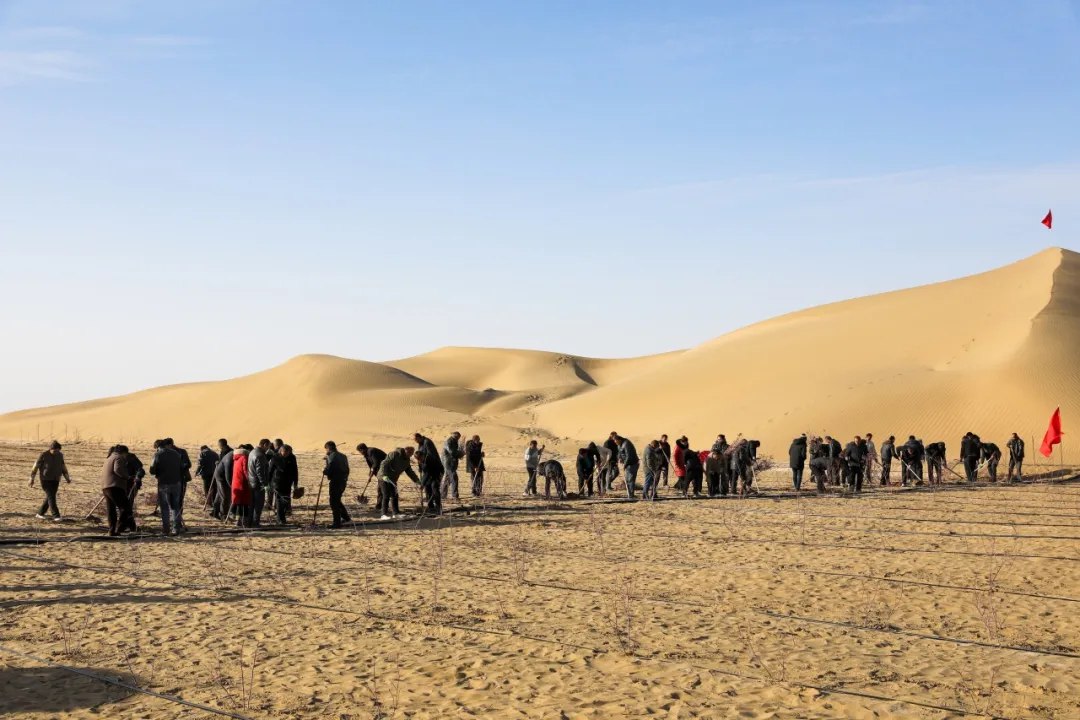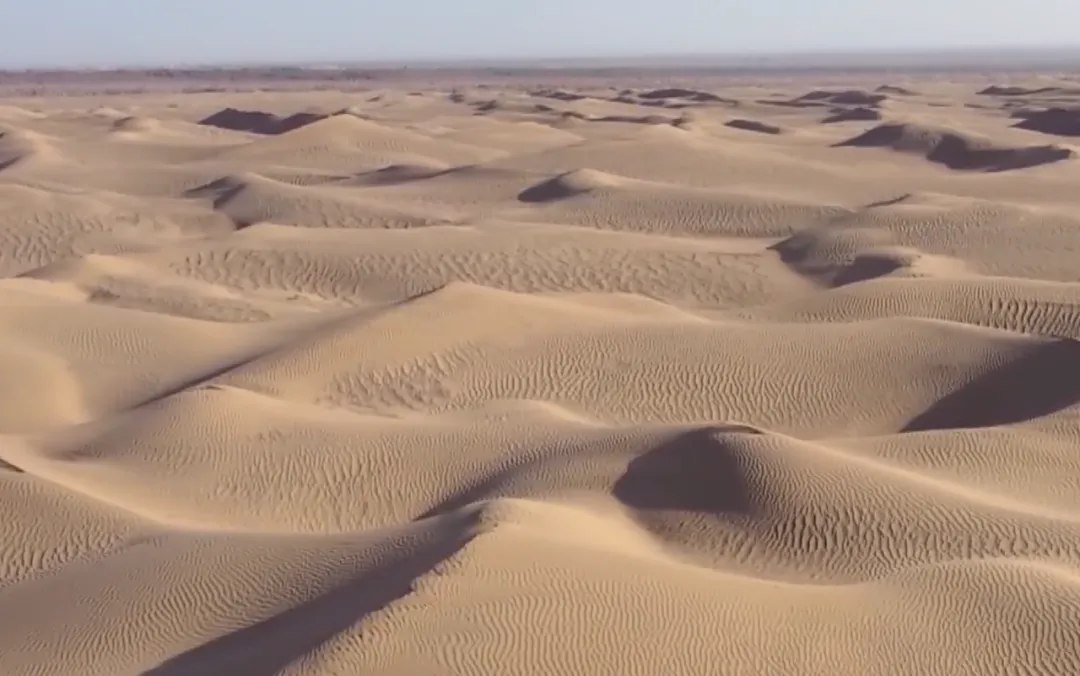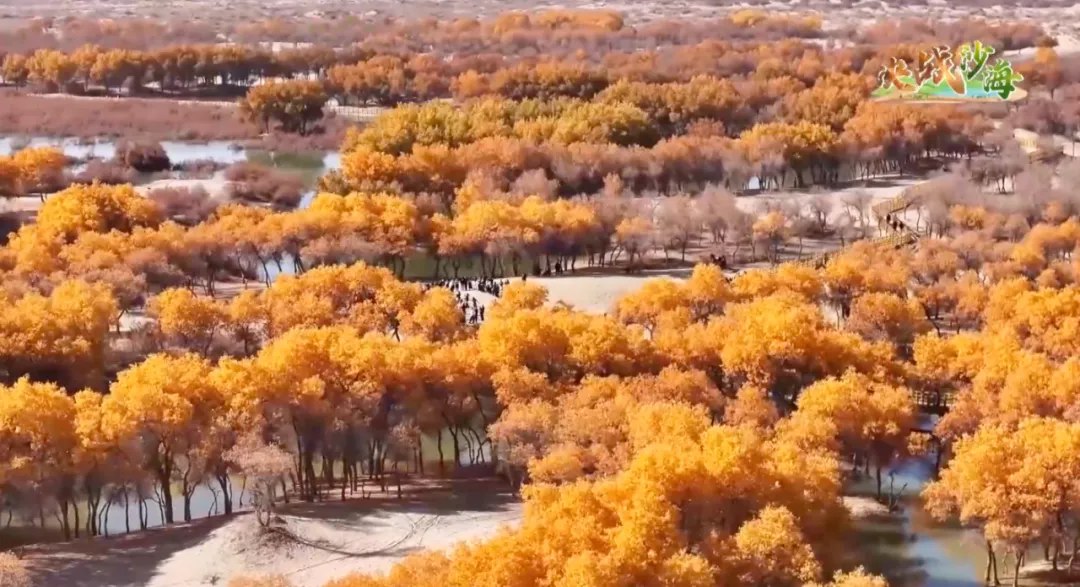100,000 roses come into bloom in Taklimakan Desert
On Nov. 28, 2024, residents in Yutian county, Hotan prefecture, northwest China's Xinjiang Uygur Autonomous Region planted 100,000 rose seedlings in the sand-blocking green belt enclosing the Taklimakan Desert. Recently, the roses have come into bloom.

The Taklimakan Desert is completely encircled with a sand-blocking green belt on Nov. 28, 2024 as residents plant the final batch of rose seedlings in the belt in Yutian county, northwest China's Xinjiang Uygur Autonomous Region. (Photo/Xu Xiaolong)
"People usually think of roses as flowers in a vase. But here, they're guardians rooted in the dunes," said Maitusun Yibulayimu, a villager from Wanfang village in Arele township of the county.
Enclosing the desert means building a green barrier at the desert's boundary to protect oases from encroaching sandstorms. But the challenge was immense.
The Taklimakan Desert is the world's second-largest drifting desert, covering 337,600 square kilometers—about 76 percent of Xinjiang's desert area and about 49 percent of China's. Extremely dry with annual precipitation averaging just 10 to 80 millimeters, the desert poses major challenges for planting trees or grass.

Since the 18th National Congress of the Communist Party of China (CPC), China has effectively rehabilitated 53 percent of its treatable desertified land, with 65 million mu (about 43,333 square kilometers) of desertified land restored.
In 2014, Qiemo county in Xinjiang was buried in sand. 10 years later, it's covered in green. For more than a decade, local residents have laid 93,700 mu of straw checkerboards in the desert—equal to over 8,700 standard soccer fields.
In recent years, more than 40,000 residents of Minfeng county, Hotan prefecture, Xinjiang, have planted 56,000 mu of forests, built 24,000 mu of farmland shelterbelts, and cultivated over 10.65 million desert plants.

In 2014, Yutian county recorded 225 sandstorm days. In 2024, plants were growing in the desert, turning the sandy landscape green.
By the end of 2024, Xinjiang had restored 57.36 million mu of desertified land. In the Taklimakan Desert, 505,200 mu of straw grids had been laid, over 17.25 million mu of forests planted, and 2 billion trees grown. Planted 1 meter apart, these trees could circle the Earth nearly 50 times.

 Scan the QR Code
Scan the QR Code